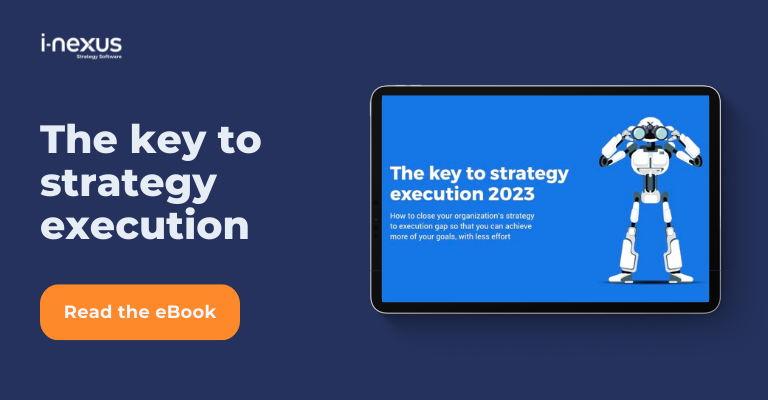How can you exploit your data to improve decision-making and enhance your business performance?
Written by: James Davies, Executive Vice President of Product
In practice, we already know that data-driven decision-making offers tremendous competitive advantages. More importantly, decisions based on data can themselves be analyzed, refined and repeated.
Curiously, even armed with the knowledge that data can offer critical business insight, not all companies are fully on board.
In 2020, the truth is that your gut instinct is wrong, and the data is right.
This is the history, challenges, solutions and advantages of adopting data-driven decision-making.
Data over instinct
When it comes to data vs instinct, we humans have a strong addiction to our own capabilities, developed over millions of years.
If you see a tiger, it’s a reasonable instinct to run away.
On the other hand, modern commercial life has only emerged in the past few hundred years. Realistically, not much changed until the advent of computing – and data.
But we are not well-adapted to living in a data-world.
In the industrial past, large machines were mechanical versions of the ox or horse, and instinct served reasonably well.
As we move into the Fourth Industrial Revolution – where artificial intelligence, robotics, the Internet of Things, biotechnology and quantum computing are dominant forces – will our instincts be enough?
Evidence of data-driven success
When it comes to the battle of data and instinct, these two examples prove the value of fact-based decision making.
1) Walmart looks into the eye of the hurricane
One of the earliest and most famous examples of data-driven success comes from Walmart.
When Hurricane Frances threatened to hit Florida in 2004, Walmart and many others assumed they knew what would be high on Floridians’ shopping lists:
- Flashlights,
- Batteries,
- Bottles of water…
But a simple analysis of the sales in the weeks prior to a previous hurricane showed Pop Tarts and beer were top sellers.
Walmart shipped out extra stock in double-quick time and not only captured the sales but also, critically, kept the beer flowing.
2) Customer analytics
Large consultancy firms survey the benefits of customer analytics as the source of data-driven decision-making.
In 2018 McKinsey & Co reported that companies who identified as ‘Extensive users of customer analytics’ were more likely to outperform the market.
Three years is a long time in the Fourth Industrial Revolution.
The data landscape continues to transform. New tools, greater compute power, and mature cloud services offer extraordinary new capabilities.
As hard evidence of data-driven success emerges, what stops businesses from full-throttle adoption?
The current usage of data in businesses
The good news is that many enterprises are at least on the data road. A 2019 survey by New Vantage Partners describes the responses:
- 92% are increasing their pace of investment in Big Data and AI
- 62% have already seen measurable results
- 48% say their organization competes on data and analytics
- 31% have a “data-driven organization”
- 28% have a “data culture”
However, among this sunshine a little rain also falls:
77% of respondents say that “business adoption” of big data and AI initiatives continues to represent a challenge for their organizations.
The report foreword, by Thomas H. Davenport and Randy Bean, comments:
“Respondents clearly say that technology isn’t the problem—people and (to a lesser extent) processes are.”
Likewise, Matthew Syed describes in his 2015 book Black Box Thinking: The Surprising Truth About Success how Dyson, Mercedes, Google, the aviation industry and many others have pursued data-driven decision making.
Syed notes that not everyone yet ‘gets’ it, and not every organization is taking action.
What data-driven decision-making isn't
During the Fourth Industrial Revolution, AI, ML and RPA capabilities are replacing repetitive tasks.
For example, AI detects disease markers more effectively and efficiently than doctors – but the software has nothing to say on the causes.
Even where very large datasets can show a correlation between factors, the underlying causation remains in the domain of human understanding (see The Book of Why by Judea Pearl).
Data provides the foundations and structures for making the four types of business decisions.
For example, the data might tell you that members of exclusive golf clubs do well in business, and that people who do well in business are often members of exclusive golf clubs. There is a high degree of correlation.
Does that mean promoting golf clothing to people in business will do well?
The story you choose to tell will be informed by the data. The data will tell you the results of your actions. Here, perhaps business people only think about golf at the weekend. Your promotion only works at specific times.
You choose the story, and the data provides the hard numbers to tell you what is happening.
Of course, flashlights, beer, Pop Tarts and golf are somewhat trivial examples.
Data-driven decision-making really comes into its own when there are multiple variables affecting huge data quantities.
For many organizations, there are hundreds or potentially thousands of inputs arriving in a constant stream.
The aim is to capture, organize and analyze the data, and ensure the whole enterprise acts in an integrated fashion based on the same foundations.
Start small, grow fast - the barriers to a data-culture
The sharpest points of resistance to a data-driven culture are the perceived disruption, and the costs of transformation.
1) Listening to your head, heart and gut
If you have been successful in the past, why would you change?
All those instinct-based successes simply build up a confirmatory picture that instinct really is the right way to go.
2) Disruption over all else
Large, revolutionary – or worse, transformative – technology deployments have had a chequered history, and people’s memories are long, and shareholders’ patience short.
In 2019 alone, $1.3trn was invested in technology for digital transformation, with $900bln wasted due to failed deployment.
Harvard Business Review
For many enterprises the daunting prospect of rationalizing, simplifying and consolidating an ugly sprawl of systems and sources can be too much to face.
Will the effort be worth the prize? These people and process issues all too easily frustrate the move to a data culture.
3) Starting small and focusing on quick wins
The simple answer to overcoming barriers to a data culture is to start small and grow fast, focusing on operational benefits to find the ‘quick wins’.
As soon as people see the benefits of the data culture, even in a pilot or test case, data-driven decision making rapidly becomes embedded.
Over time, data becomes the natural foundation for any discussion, used to test intuition and to refine inspiration.
The first step is therefore to run and improve existing products and services, based on data.
What are your business' next steps to data-driven decision making?
i-nexus can help you establish an enterprise-class Strategy Execution platform that will help drive a culture of continuous innovation and improvement.
By empowering you to harness data to make decisions with the right information, our platform supports real-time, intuitive visualization, meaning that data is the foundation for your choices, and instinct can be used with knowledge of the facts.
Click here to visit our Strategy Execution Management knowledge hub, filled with content to support you in embracing the 'no normal' of strategy in the 2020s and beyond, or explore these recommendations:
- The 4 types of business decisions and how to make them: Correctly making the different types of decision-making is critical for your business - here's how technology can support you.
- How AI will evolve for machine-assisted Strategy Execution: Discover how AI and machine-assisted learning will help you execute your strategies in the 2020s.
- The key to Strategy Execution: Uncover the benefits of excellent Strategy Execution, the organizations who have succeeded, and how your business can follow suit.
About the author
James Davies is i-nexus’ Executive Vice President of Product. As an experienced software executive with 20 years of experience working in Silicon Valley, USA, James has held senior leadership roles in three venture capital backed software start-ups (including CEO, CPO and Chairman) and has delivered management consulting services to some of the world’s largest technology companies.
If you’d like to talk more about the future of Strategy Execution, reach out to him on james.davies@i-nexus.com or connect with James on LinkedIn for the latest Strategy Execution insights.




